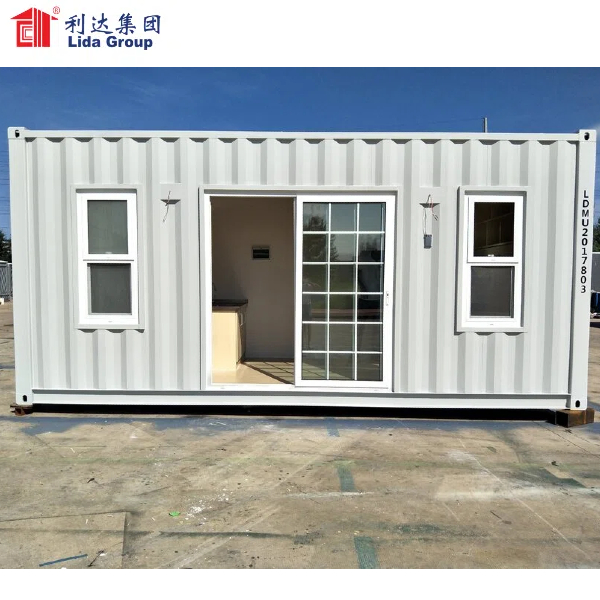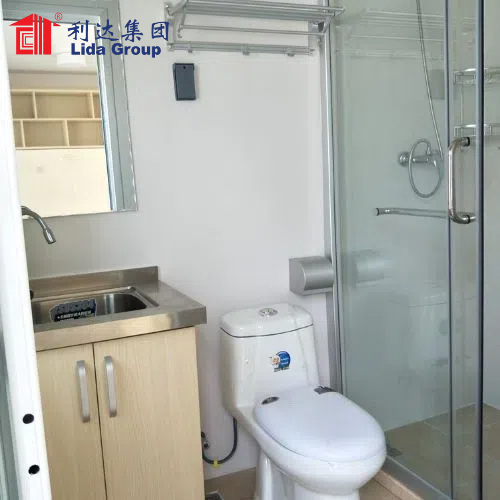Introduction
In today’s fast-paced business environment, the need for flexible, cost-effective, and durable solutions for temporary spaces has never been more critical. Container houses, particularly 20FT and 40FT models, have emerged as a popular choice for temporary offices, camps, and meeting spaces. This article explores the benefits, design features, applications, and future potential of high-quality container houses in various sectors.
Understanding Container Houses
What Are Container Houses?
Container houses are prefabricated structures made from repurposed shipping containers. Originally designed for transporting goods, these containers have been creatively adapted into functional living and working spaces. A 20FT container typically measures 20 feet in length and 8 feet in width, while a 40FT container doubles that size, making them versatile options for various uses.
Key Features
- Durability: Built to withstand harsh environmental conditions, shipping containers are robust and long-lasting.
- Modularity: These structures can be easily customized and combined to create larger spaces or specific layouts.
- Cost-Effectiveness: Utilizing used containers significantly reduces construction costs compared to traditional building methods.
Benefits of 20FT/40FT Container Houses
1. Affordability
Container houses are an economical choice for temporary spaces:
- Lower Material Costs: The reuse of shipping containers minimizes the need for new materials, reducing expenses.
- Reduced Labor Costs: Quick assembly and prefabrication lower labor costs significantly.
2. Speed of Construction
Time is often of the essence in business operations:
- Rapid Setup: Container houses can be assembled in days rather than weeks, allowing businesses to become operational quickly.
- Prefabrication: Many components can be pre-assembled, further enhancing construction speed.
3. Portability
One of the standout features of container houses is their mobility:
- Easy Relocation: If a project site changes, the containers can be transported with minimal hassle.
- Flexible Configurations: Containers can be arranged in various ways to adapt to different needs.
4. Safety and Security
Safety is paramount in any environment:
- Robust Construction: The steel structure of container houses offers high security against theft and vandalism.
- Fire Resistance: Containers are designed to be fire-resistant, enhancing safety for occupants.
5. Minimal Environmental Impact
Sustainability is increasingly important:
- Recycling: Repurposing containers reduces waste and the demand for new construction materials.
- Energy Efficiency: Container houses can be equipped with energy-efficient systems, such as solar panels.
Design Considerations for Container Houses
1. Space Optimization
Maximizing the usability of limited space is crucial:
- Multi-Functional Areas: Designing spaces for multiple purposes can enhance functionality.
- Smart Layouts: Thoughtful design can create distinct areas for work, meetings, and relaxation.
2. Insulation and Climate Control
Comfort is key in any workspace or living environment:
- Thermal Insulation: Proper insulation materials can help regulate temperature, ensuring comfort in various climates.
- Ventilation: Adequate ventilation systems are essential for maintaining air quality.
3. Utilities and Amenities
Providing essential services enhances livability:
- Plumbing and Electrical Systems: Container houses can be outfitted with necessary plumbing and electrical systems to support modern living and working conditions.
- Kitchen and Bathroom Facilities: Including compact kitchen and bathroom units can significantly improve the quality of life for occupants.
4. Aesthetic Considerations
While functionality is essential, aesthetics should not be overlooked:
- Interior Design: Creative interior design can transform a container into an inviting workspace.
- Exterior Finishes: Applying exterior cladding or paint can enhance visual appeal and integrate the container house into its surroundings.
Applications of 20FT/40FT Container Houses
1. Temporary Offices
Container houses serve as ideal temporary office spaces:
- Flexible Workspaces: They can be configured to create open-plan offices, meeting rooms, or private offices.
- Remote Locations: Perfect for construction sites or remote project locations where traditional office space is unavailable.
2. Camps for Workers
Container houses are excellent for accommodating workers in various industries:
- Comfortable Living Quarters: Providing essential amenities ensures that workers have a comfortable place to rest.
- Community Spaces: Larger configurations can include communal areas for dining and recreation.
3. Meeting Spaces
Container houses can be adapted for meetings and conferences:
- Mobile Meeting Rooms: Easily transportable meeting spaces that can be set up wherever needed.
- Collaborative Environments: Configured to facilitate teamwork and brainstorming sessions.
4. Emergency Housing
In crisis situations, container houses can provide rapid shelter:
- Disaster Relief: Quick deployment of container houses can offer immediate housing for displaced individuals.
- Durable Shelter: Their robust design ensures safety and security in uncertain conditions.
5. Educational Facilities
Container houses can also serve educational purposes:
- Classrooms: In areas with limited infrastructure, container houses can be converted into classrooms or training centers.
- Community Learning Centers: They can function as hubs for workshops, training, and community education.
Addressing Common Concerns
1. Space Limitations
Many people worry about the small size of container houses. However, innovative design solutions can maximize space, making it feel more spacious and functional.
2. Quality of Living Conditions
Concerns about living conditions in container houses are common. With proper insulation, ventilation, and amenities, these houses can provide comfortable and safe environments for occupants.
3. Building Regulations
Navigating building codes and regulations can be challenging. However, container houses can be designed to meet local building codes, ensuring compliance and safety.
The Future of Container Housing Solutions
Trends Influencing Container Housing
- Sustainability Focus: As environmental awareness increases, the demand for sustainable housing solutions will grow, making container houses an attractive option.
- Technological Advancements: Innovations in construction technology will enhance the efficiency and quality of container housing designs.
- Urbanization: As cities expand, container houses may provide affordable and flexible housing solutions in densely populated areas.
Lida Group’s Commitment to Innovation
Lida Group is dedicated to leading the way in container housing solutions. By investing in research and development, the company aims to provide innovative, sustainable, and affordable housing options for temporary offices, camps, and meeting spaces.
Conclusion
The 20FT and 40FT container houses represent a transformative solution for temporary office spaces, worker accommodations, and meeting facilities. With their affordability, durability, and versatility, these structures provide an effective option for various applications across multiple industries. As the demand for flexible and cost-effective solutions continues to grow, container houses will play a critical role in meeting the evolving needs of businesses and communities. Lida Group’s commitment to quality and innovation ensures that container housing will remain a viable choice for the future.
Contact Us
Post time: Aug-16-2024


